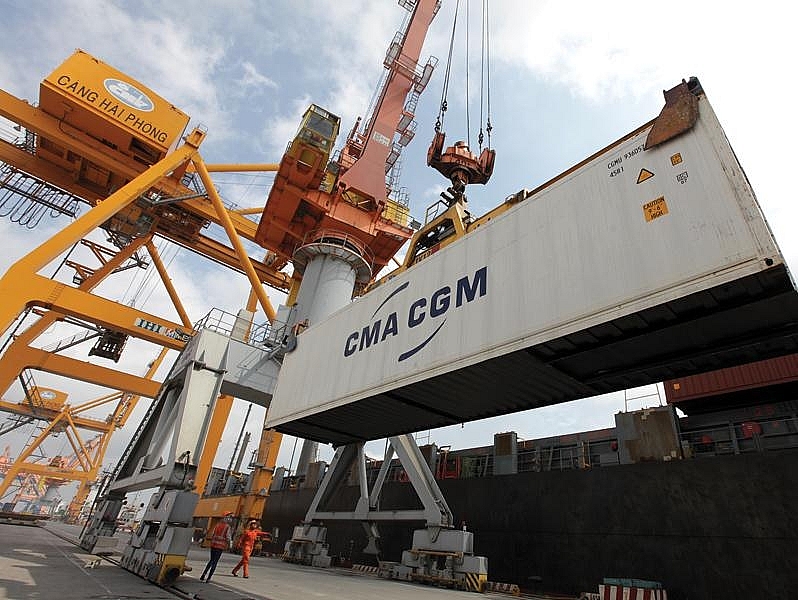What opportunities is the US–China trade war likely to bring for Vietnam?
 |
| In the US–China trade war, what opportunities for Vietnam? |
Trade volume and transactions between China and ASEAN countries increased by 66 per cent between mid-April 2017 and March 2018, while the whole of Asia saw 26 per cent growth during the same period. Asia’s trade volume is currently experiencing the fastest growth of any region in the world.
Numerous trade organisations predict that as a result of the US and China trade war, China will reduce the volume of agricultural produce it imports from the US and simultaneously increase the amount it imports from other markets.
This movement from China will open opportunities for Vietnam’s agricultural produce market to access China as well as other potential markets in Asia, which may be easier to satisfy than markets in more developed countries.
The trade war will have different impacts on the high-tech sector. For example, the war will impact Apple’s facility in China, opening a chance for other foreign-invested companies, including Samsung, to rise. Multinational companies will have to recalculate their business strategies, including moving their facilities in China to other countries.
In general, when a trade war occurs, trade and investment flows will be redistributed, flowing out of one place and into another. The question is where will this flow go? Institutional reform, in collaboration with macroeconomic stability and an attractive investment environment are prerequisites for Vietnam to take advantage of a global trade war.
| Institutional reform, in collaboration with macroeconomic stability and an attractive investment environment are prerequisites for Vietnam to take advantage of a global trade war. |
However, a trade war can also be a factor that leads to a currency war. Currency devaluation wars have occured between the great powers in an attempt to create gains for export markets which have been saturated for many years. It is yet to be seen whether these currency wars will accelerate when the trade war officially begins.
Vietnam should choose a different path and remain cautious regarding positive statistics. In reality, the exchange rate has never been a solution to address problems within the economy. Adjusting the exchange rate of USD/VND to support exports or to offset slumps in trade may work as a temporary solution for a few months, but will also create unpredictable risk and uncertainty.
The most effective policy to address this crisis is for the State Bank of Vietnam to confirm that the exchange rate will only be adjusted to meet the supply-demand relationship and to create a flexible market for Vietnam. Uncertain moves will only make the market more disoriented.
At present, the media and social media are full of negative stories about the trade war and the currency war, causing investors to lose direction. Thus, if Vietnam deliberately adjusts the USD/VND exchange rate to increase exports, the effect will be like a shock wave created by the country itself.
Finally, a well-functioning economy is due to a nominal anchor. The nominal anchor is the 4 per cent inflation target committed by the government. Inflation in the first half of 2018 was still under control, however there are signs of accelerated growth for the remainder of 2018.
Thus, from this moment on, the government must issue more powerful messages, while simultaneously building specific solutions to control inflation. At first, the trade war may not directly impact Vietnam, but if the inflation anchor abruptly broke, the Vietnamese economy boat would likely be submerged by the waves.
What the stars mean:
★ Poor ★ ★ Promising ★★★ Good ★★★★ Very good ★★★★★ Exceptional
Related Contents
Latest News
More News
- PM orders investment model for North–South high-speed rail (December 22, 2025 | 17:43)
- First members of Danang International Finance Centre revealed (December 22, 2025 | 17:39)
- Securing capital and efficiency for Vietnam’s 2026-2030 growth ambitions (December 17, 2025 | 10:00)
- Driving double-digit growth through green and circular transformation in Vietnam (December 17, 2025 | 09:00)
- Vietnam bucking trend in the global M&A landscape (December 16, 2025 | 14:20)
- Vietnam’s green transition demands collective financial action (December 15, 2025 | 12:00)
- VIR workshop highlights capital and policy for sustainable development (December 15, 2025 | 11:00)
- National Assembly approves pilot mechanisms to accelerate major projects in Hanoi (December 12, 2025 | 11:29)
- Vietnam eases policy approval requirements, simplifies foreign and outbound investments (December 11, 2025 | 17:53)
- Unpacking new momentum in Vietnam’s M&A market (December 10, 2025 | 09:59)

 Tag:
Tag:


























 Mobile Version
Mobile Version